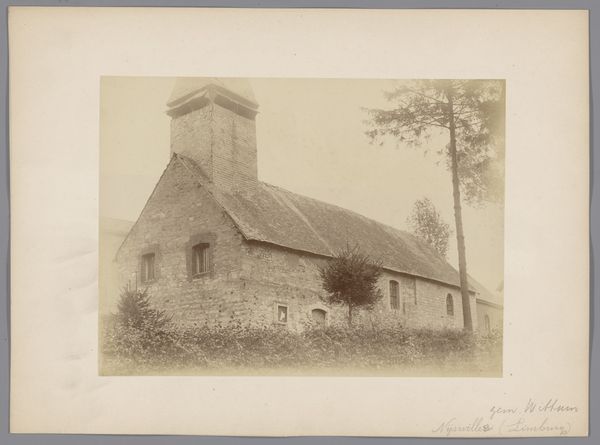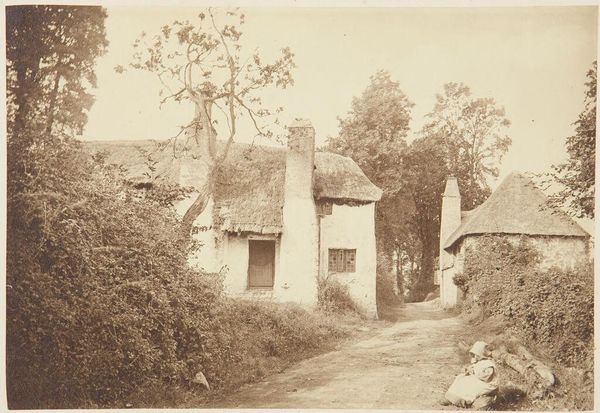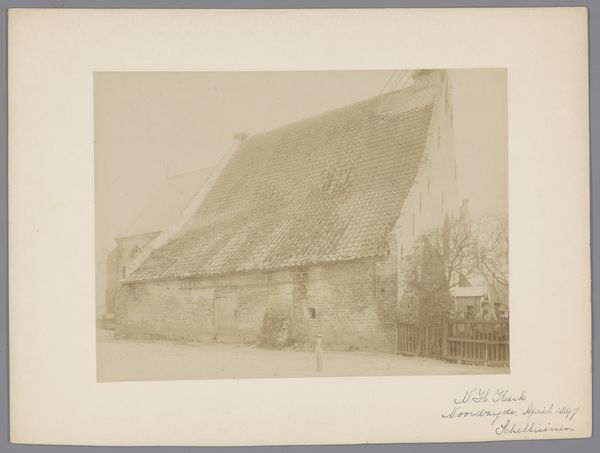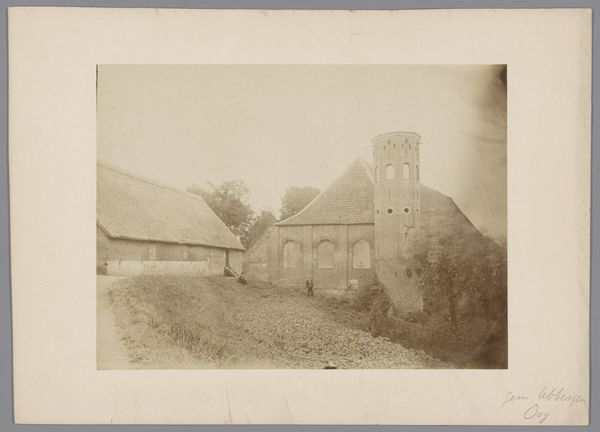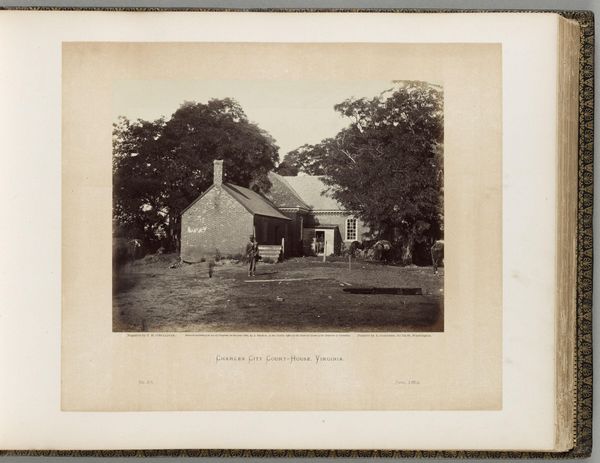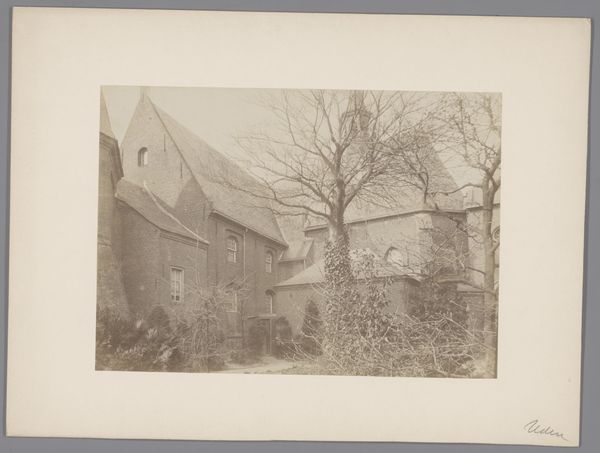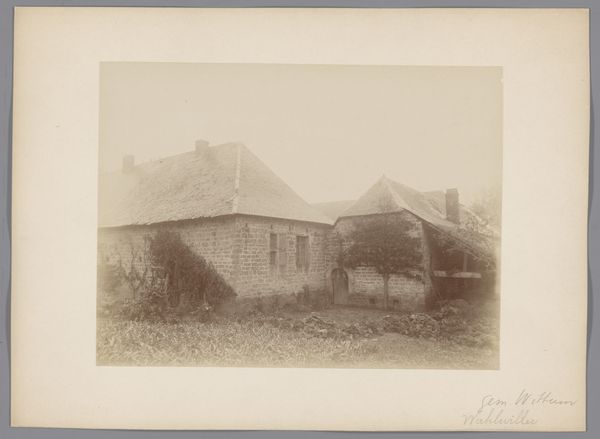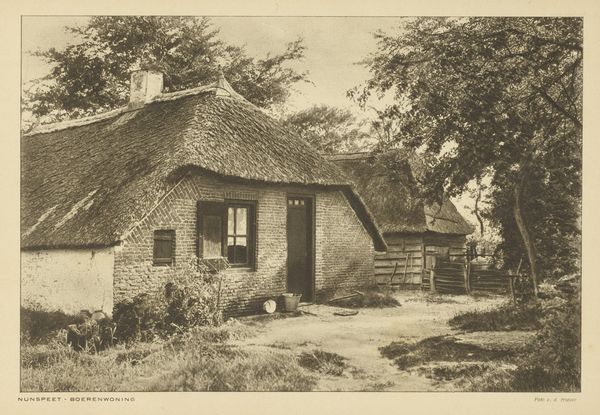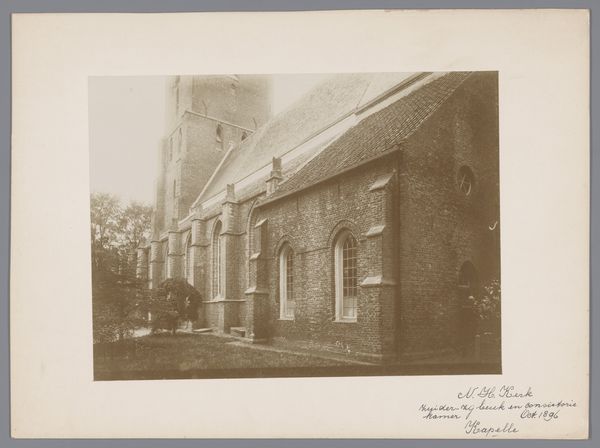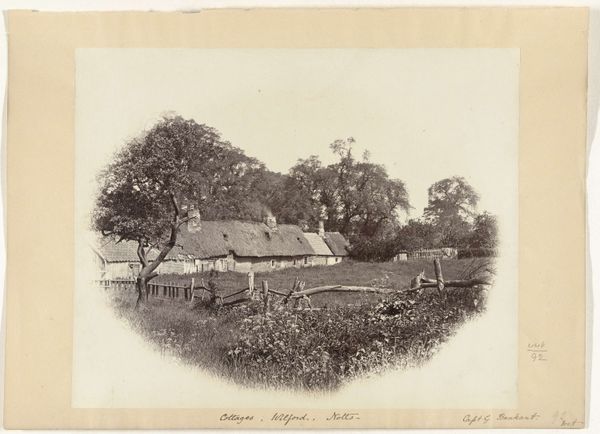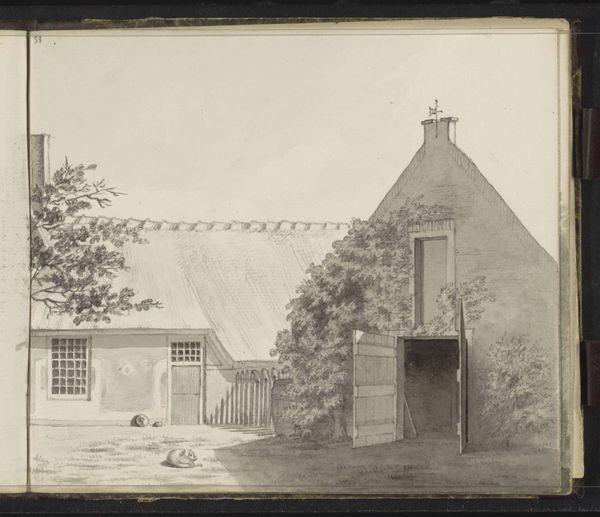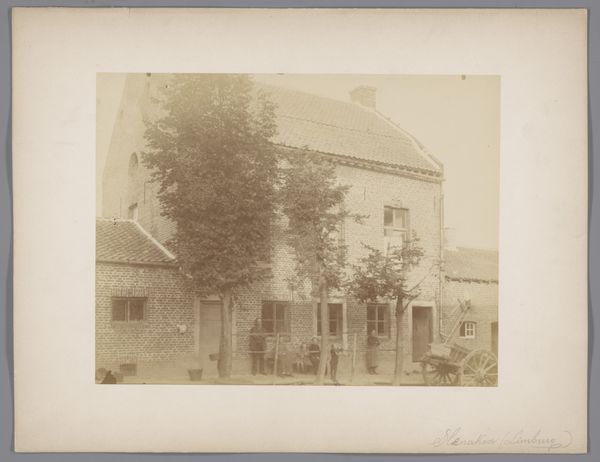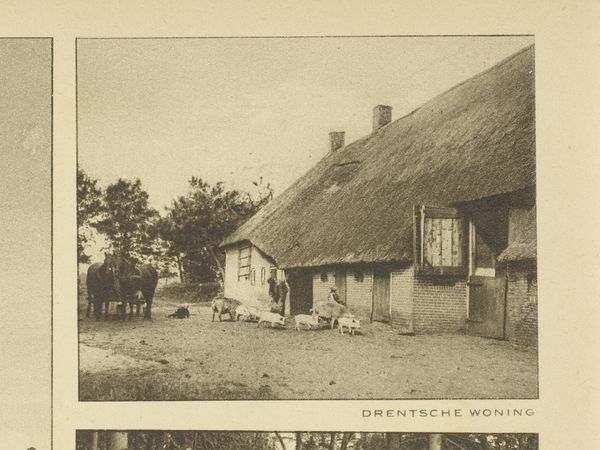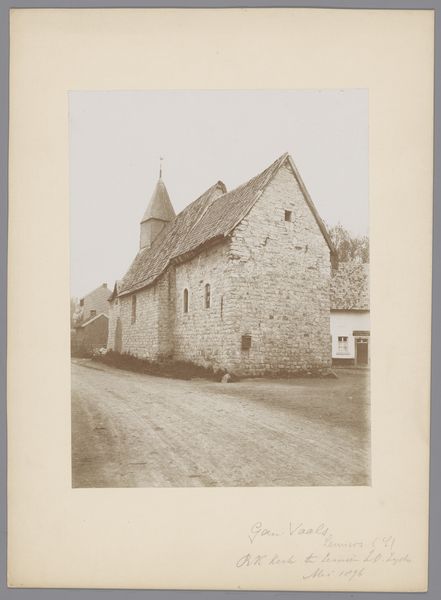
Dimensions: height 170 mm, width 218 mm
Copyright: Rijks Museum: Open Domain
This albumen print shows the north side of the Roman Catholic Church in Nijswiller. Look closely, and you’ll see a fascinating tension between the relatively rough-hewn construction of the church, and the precision of the photographic process. The walls are a patchwork of stones, likely sourced locally, laid by hand with mortar. The roof appears to be thatched, another labor-intensive vernacular material. In contrast, the photograph depends on industrial processes – the mining of silver for the light-sensitive emulsion, the grinding of the lens, the chemical development of the print. Consider also the social context. The church would have been a central feature of community life, built through collective effort and religious conviction. Photography, though, was a relatively new technology at the time, often associated with scientific documentation and the aspirations of a rapidly modernizing society. This image, created by Monumentenzorg, suggests a moment of transition, where traditional ways of life were being captured and cataloged by new technologies. It asks us to consider how our understanding of history is shaped by the materials and methods used to record it.
Comments
No comments
Be the first to comment and join the conversation on the ultimate creative platform.
